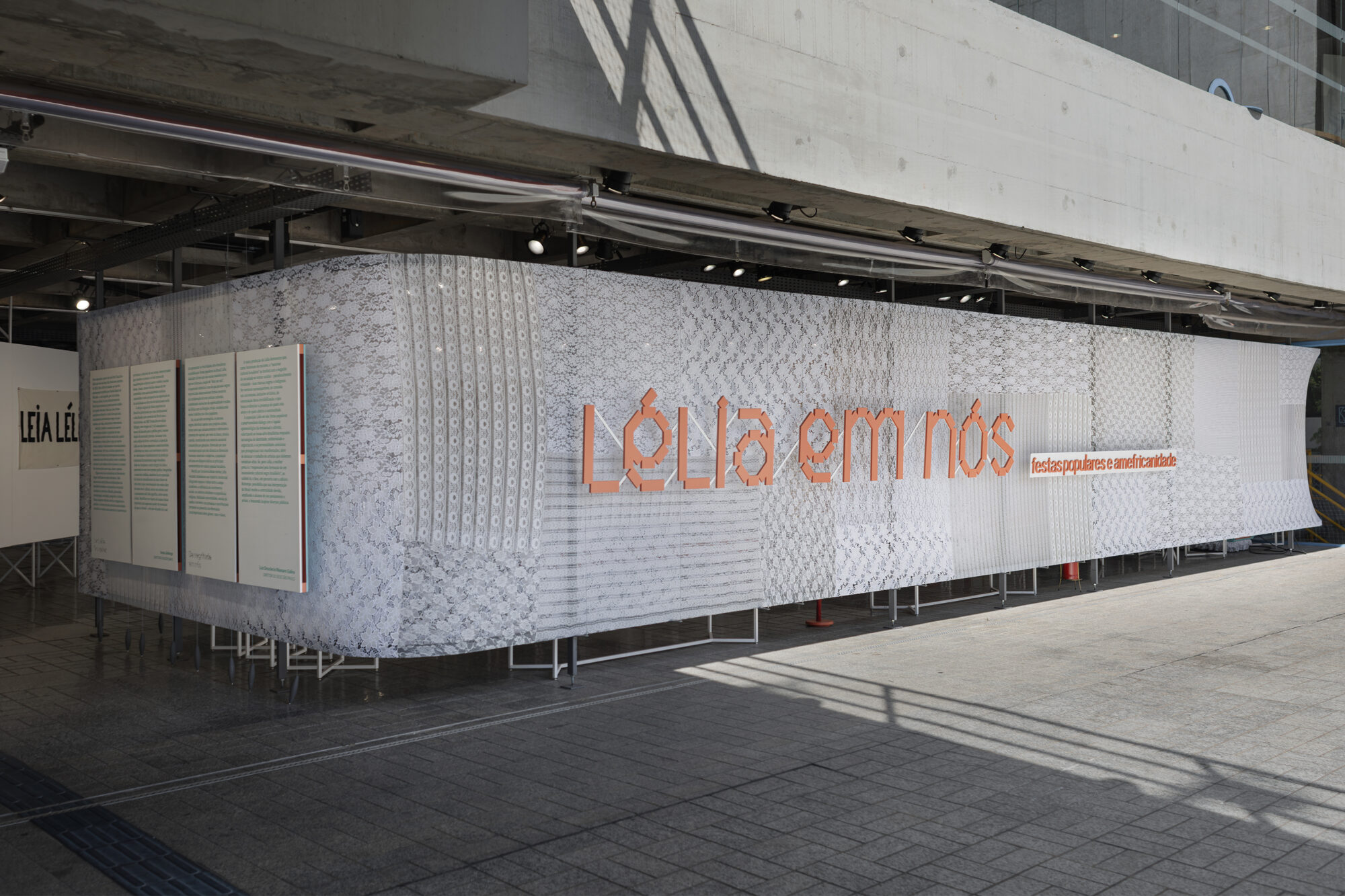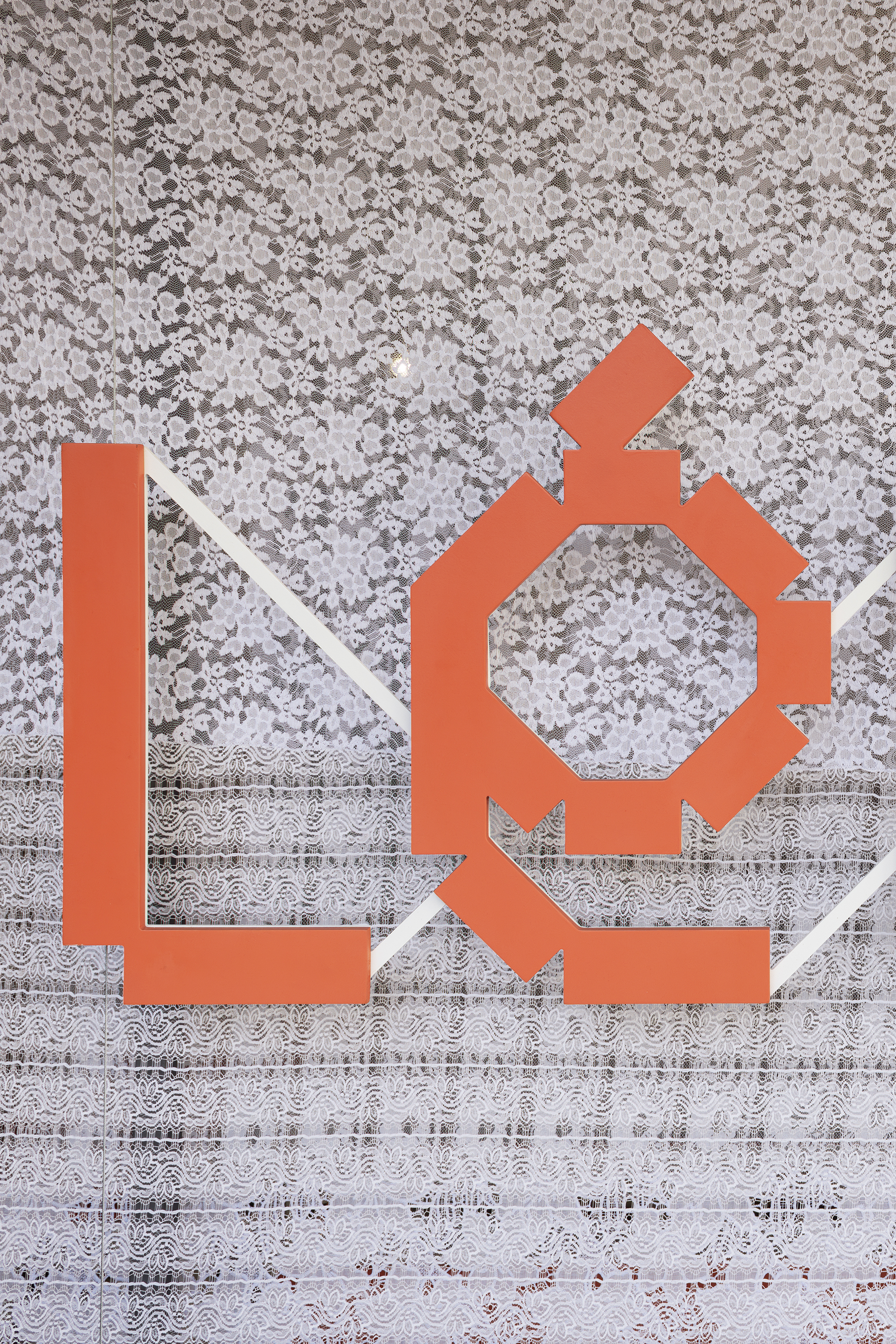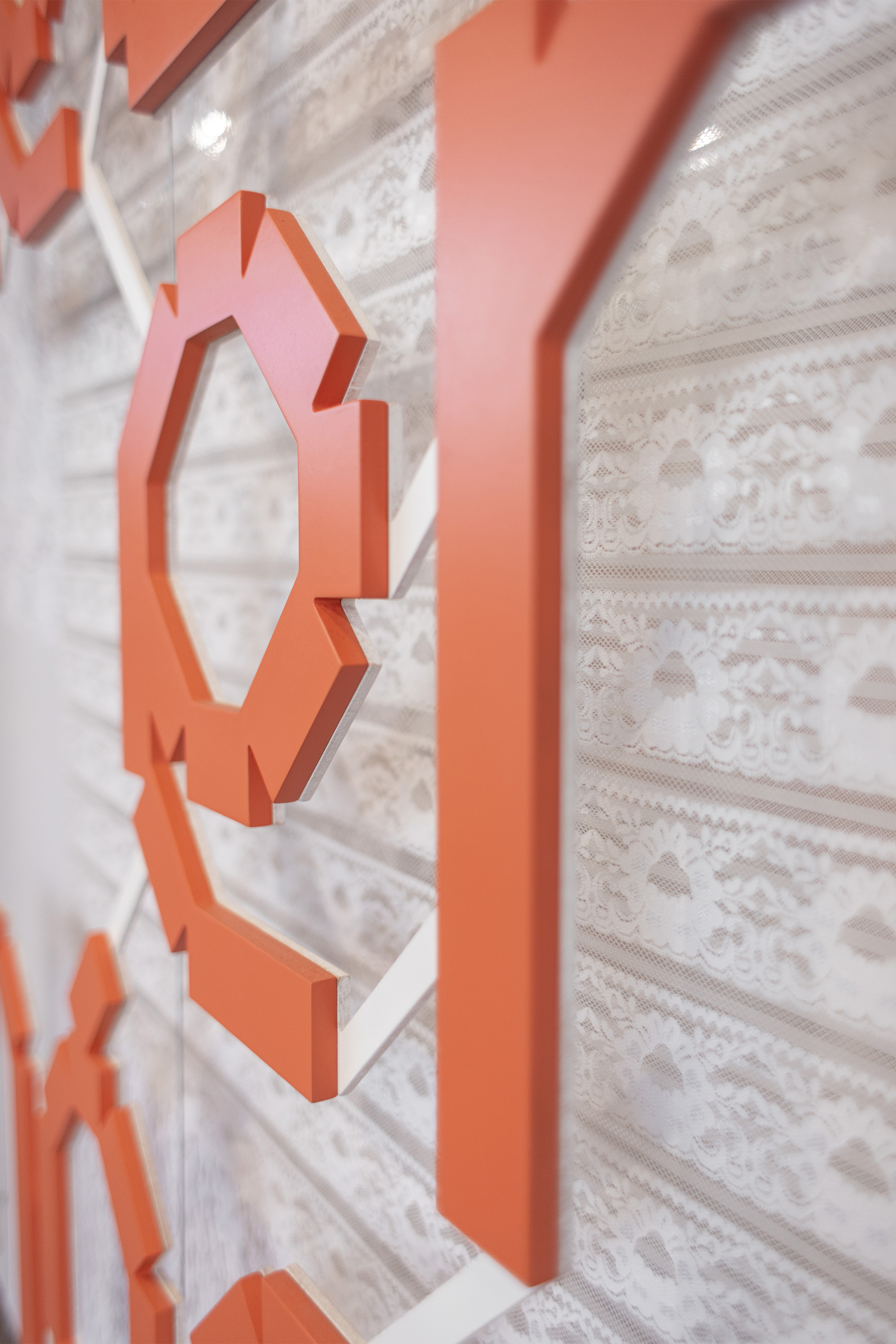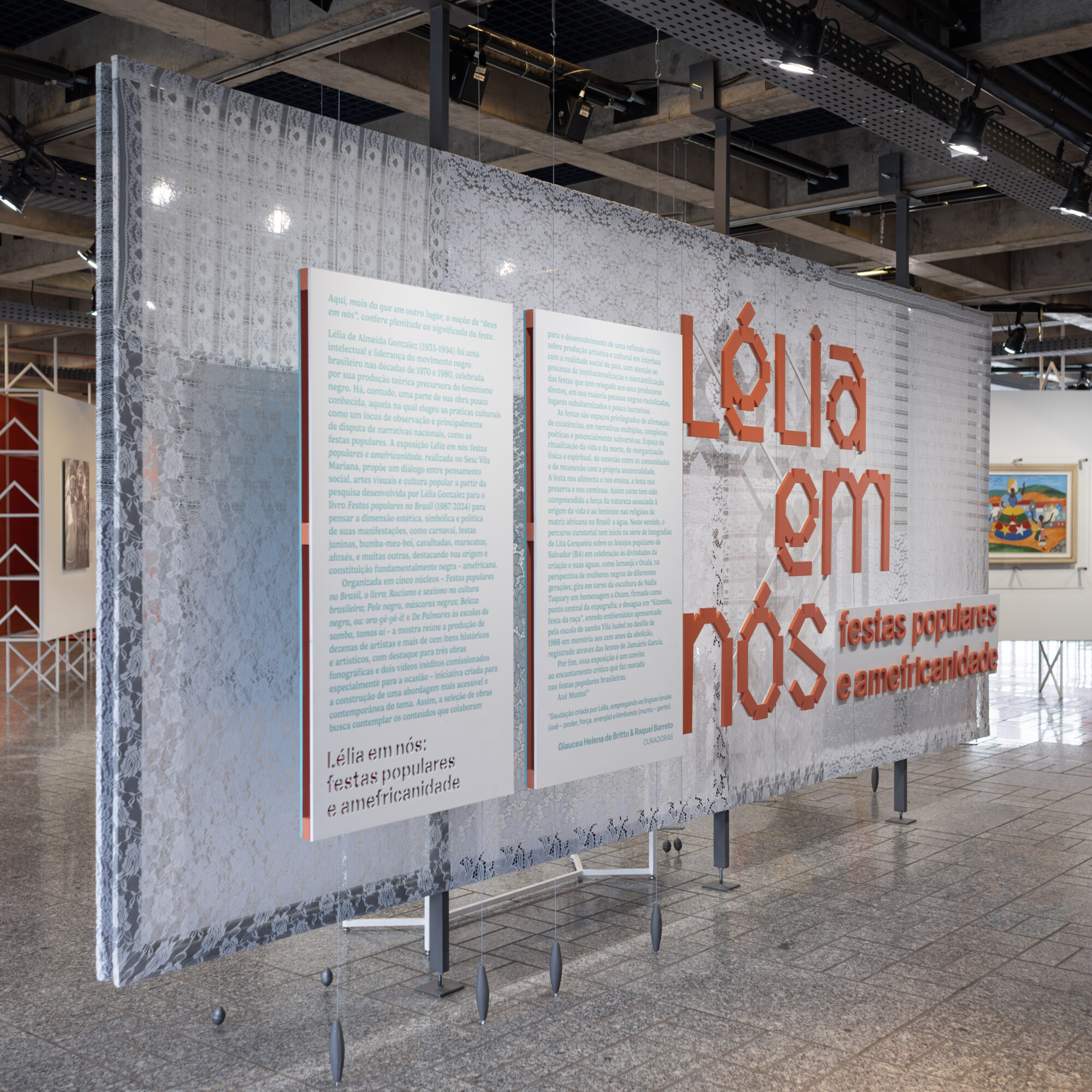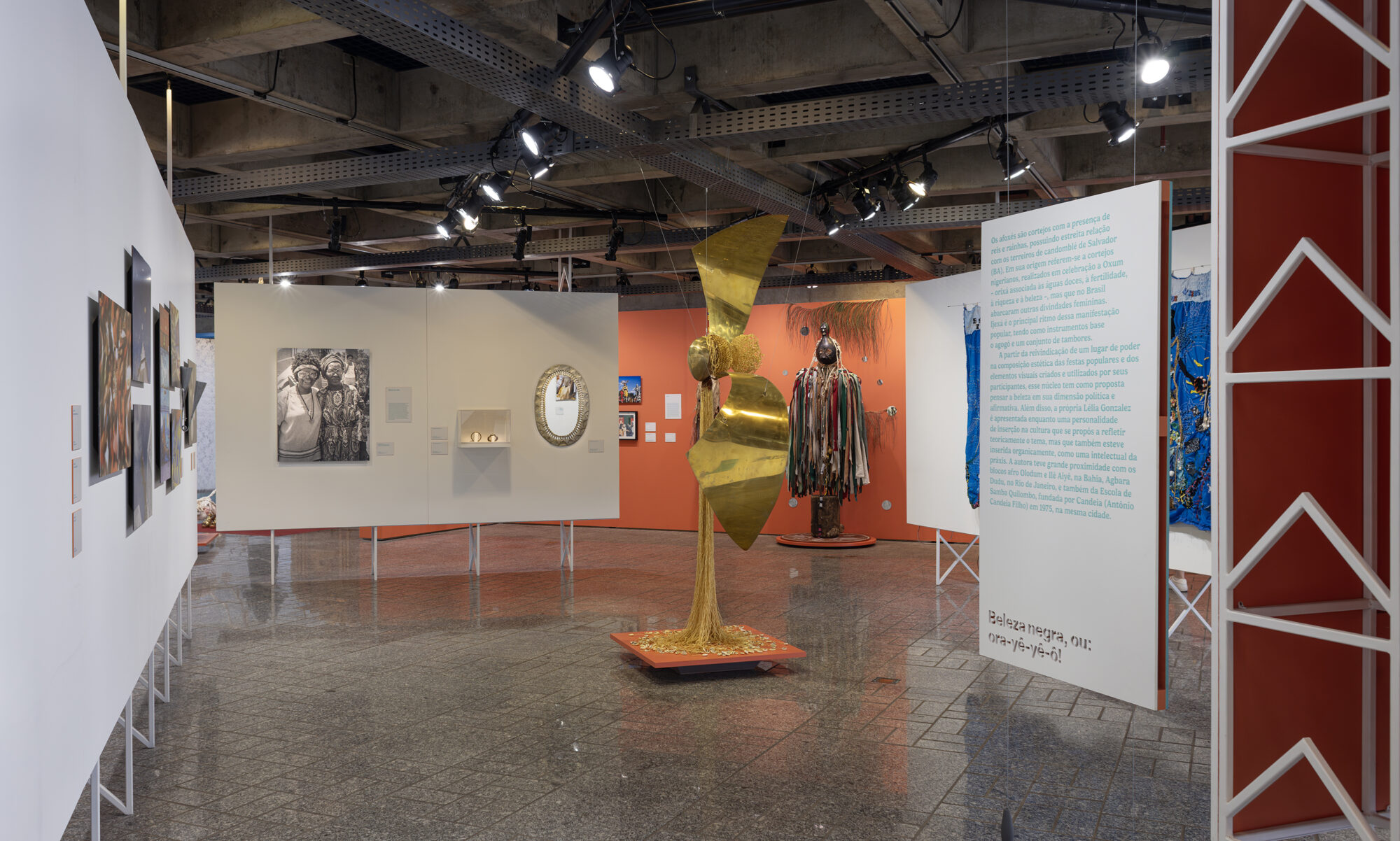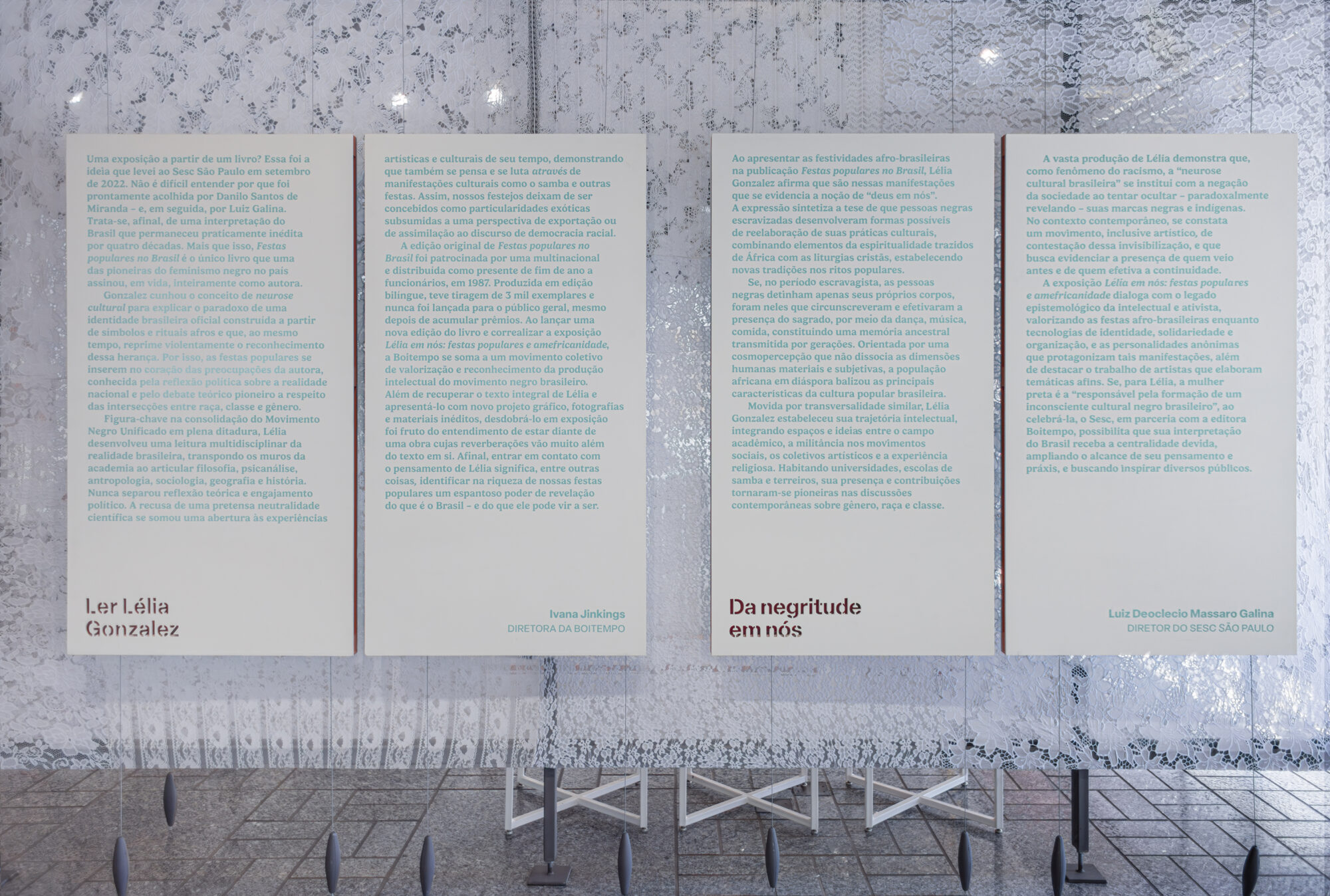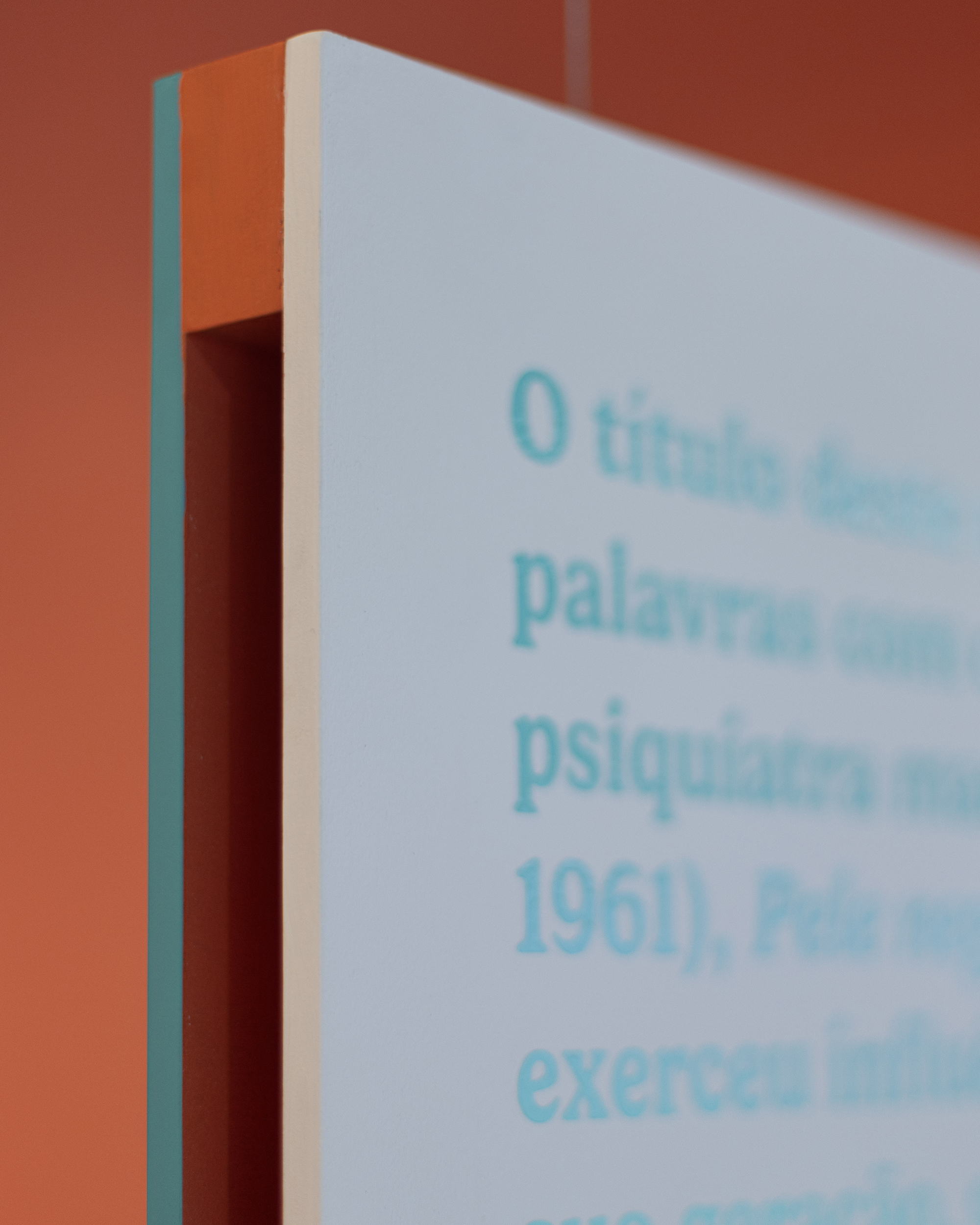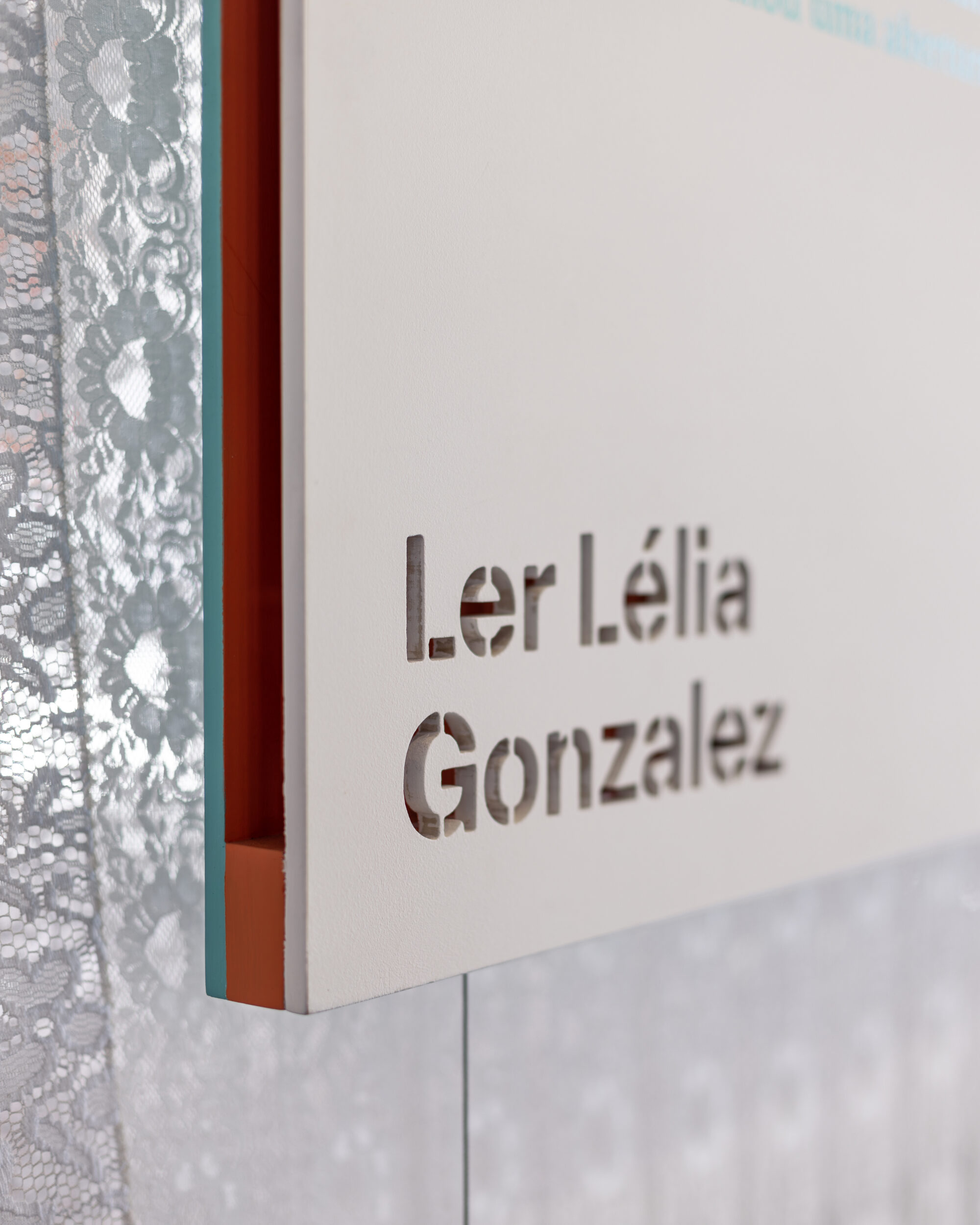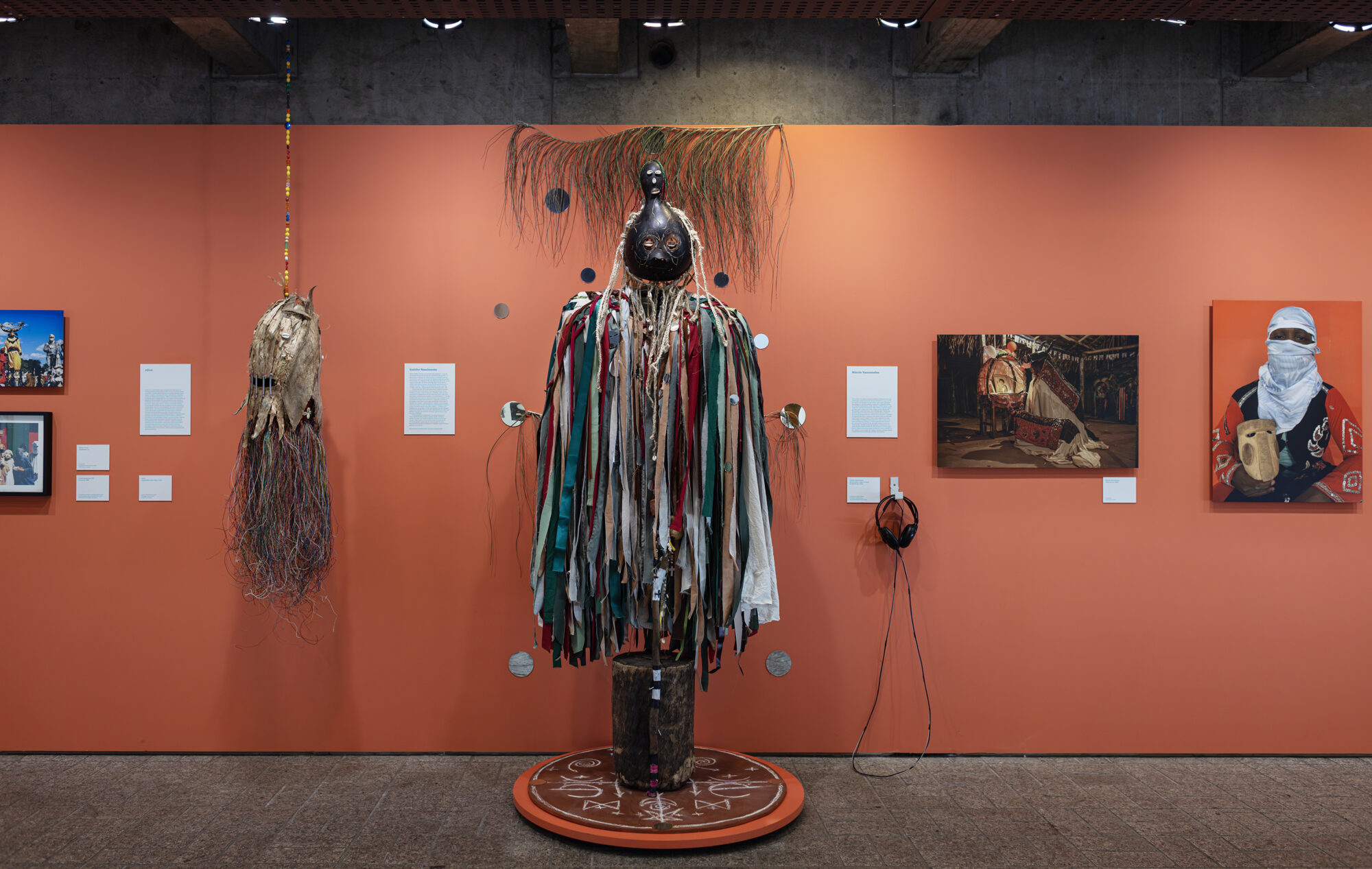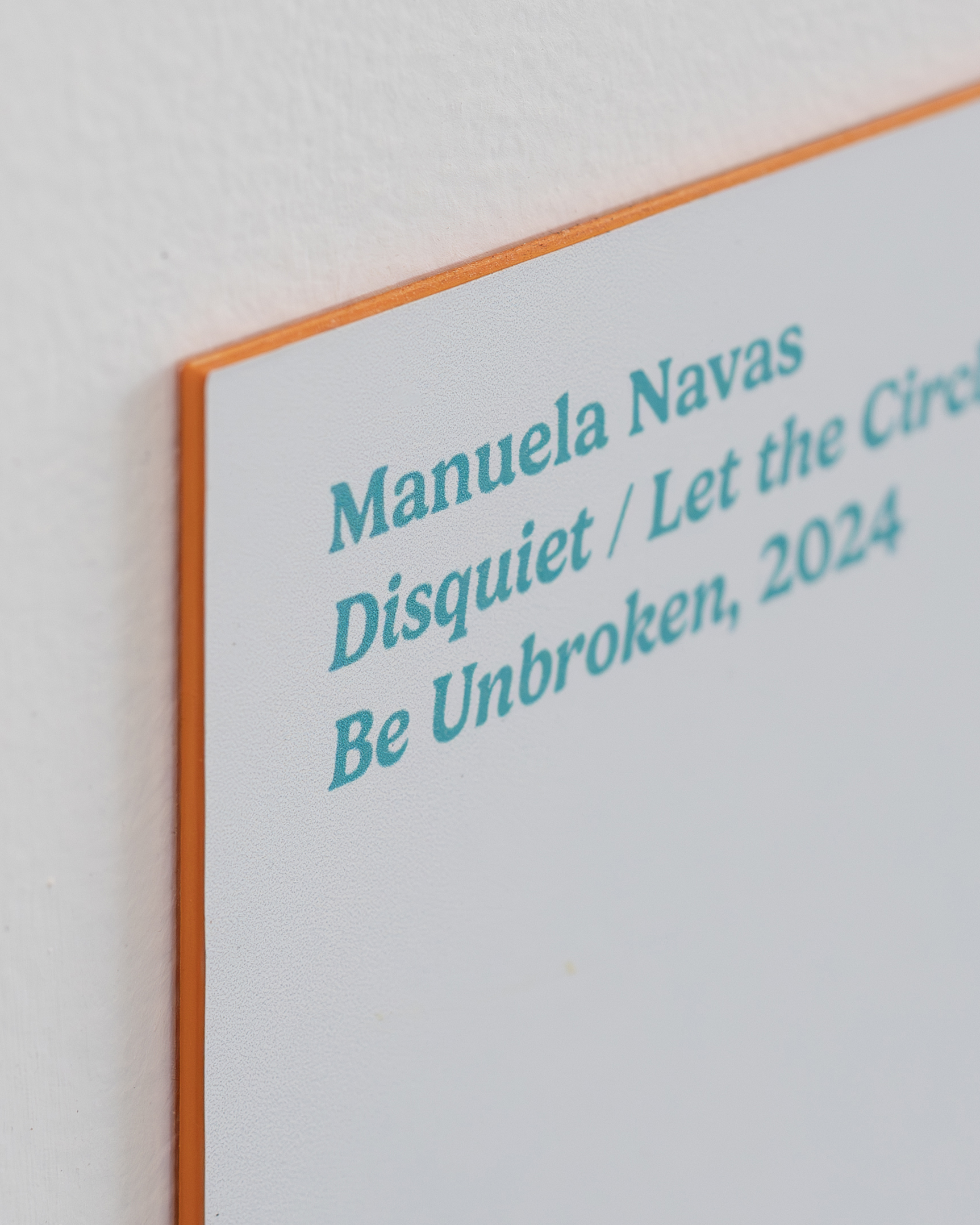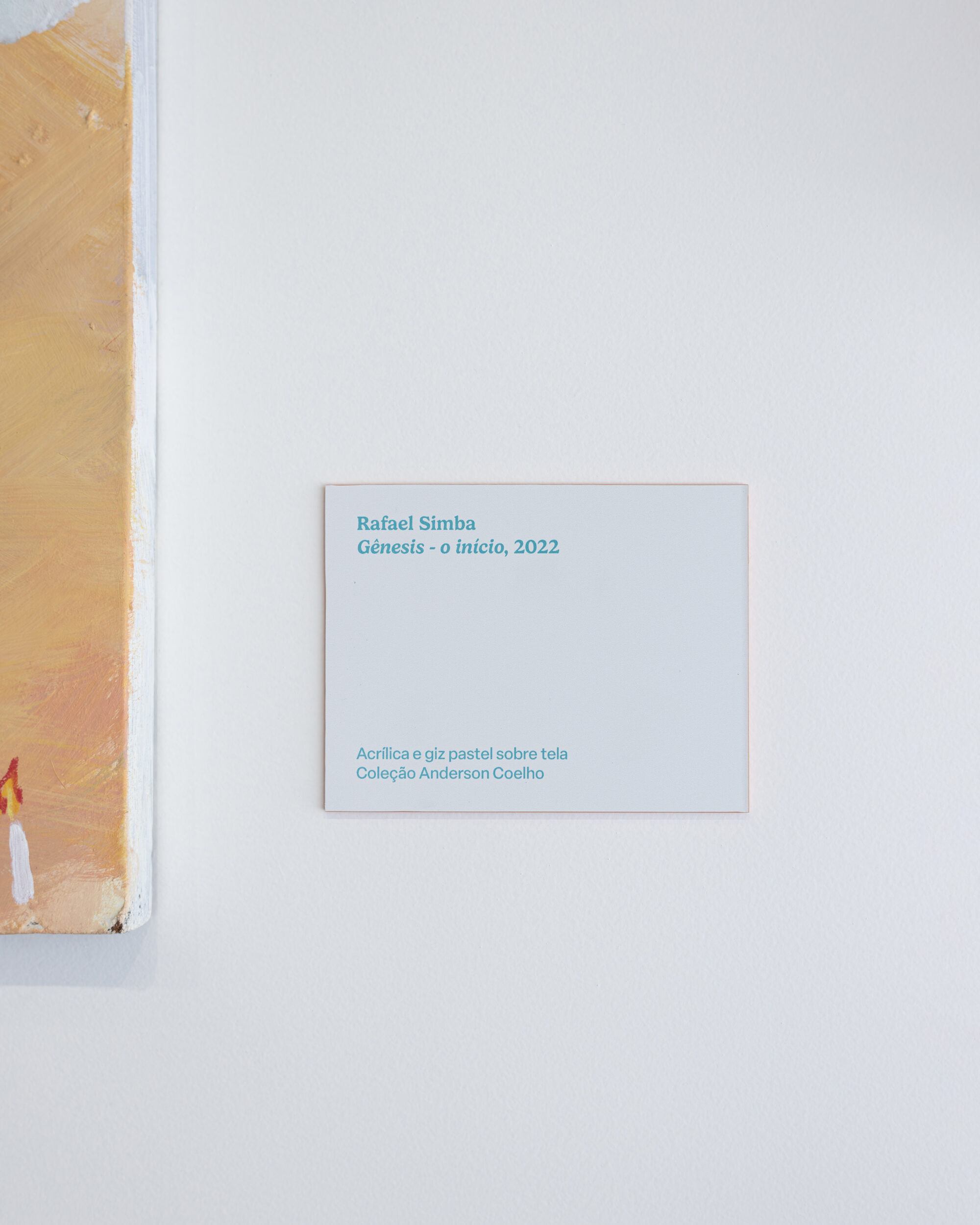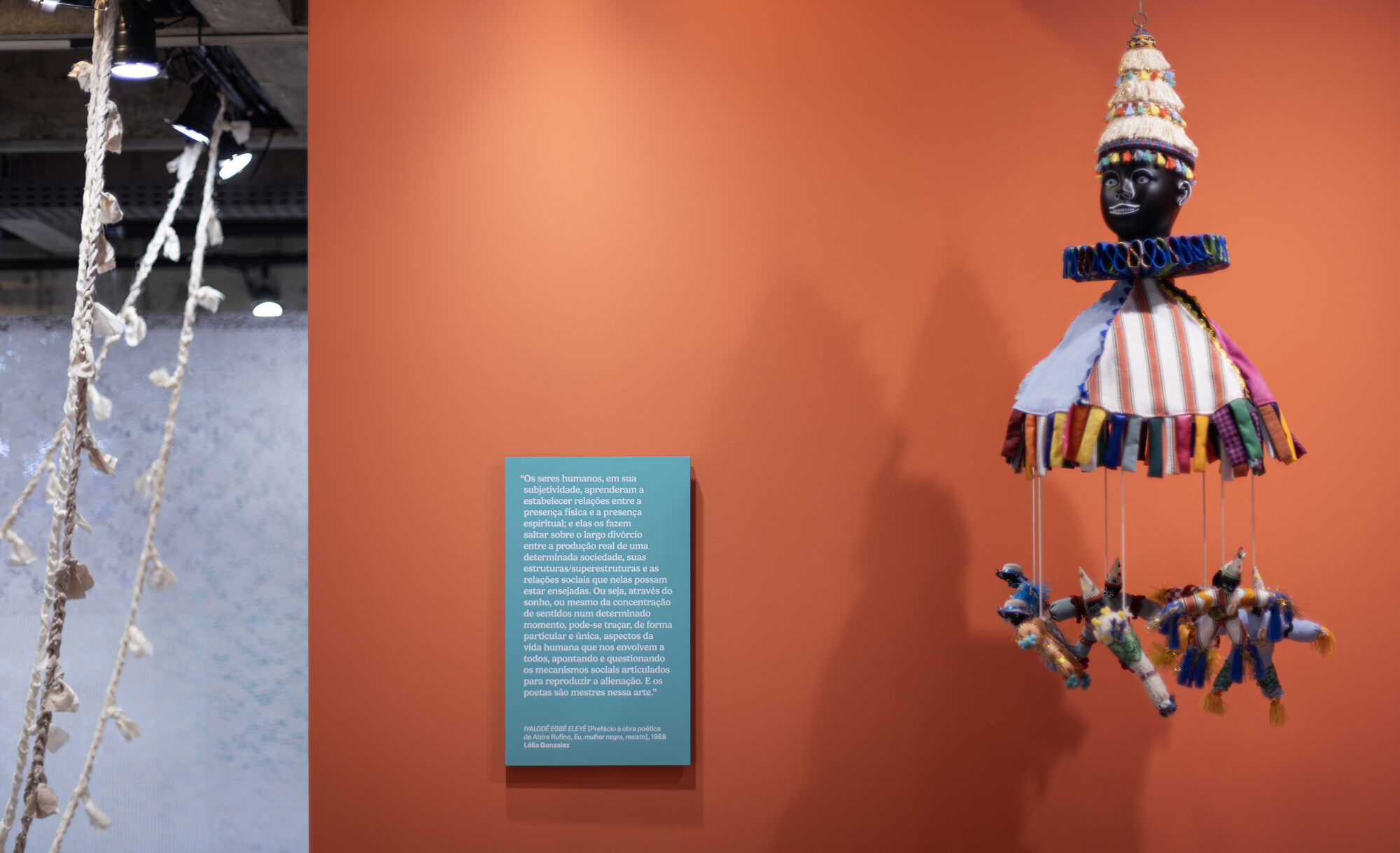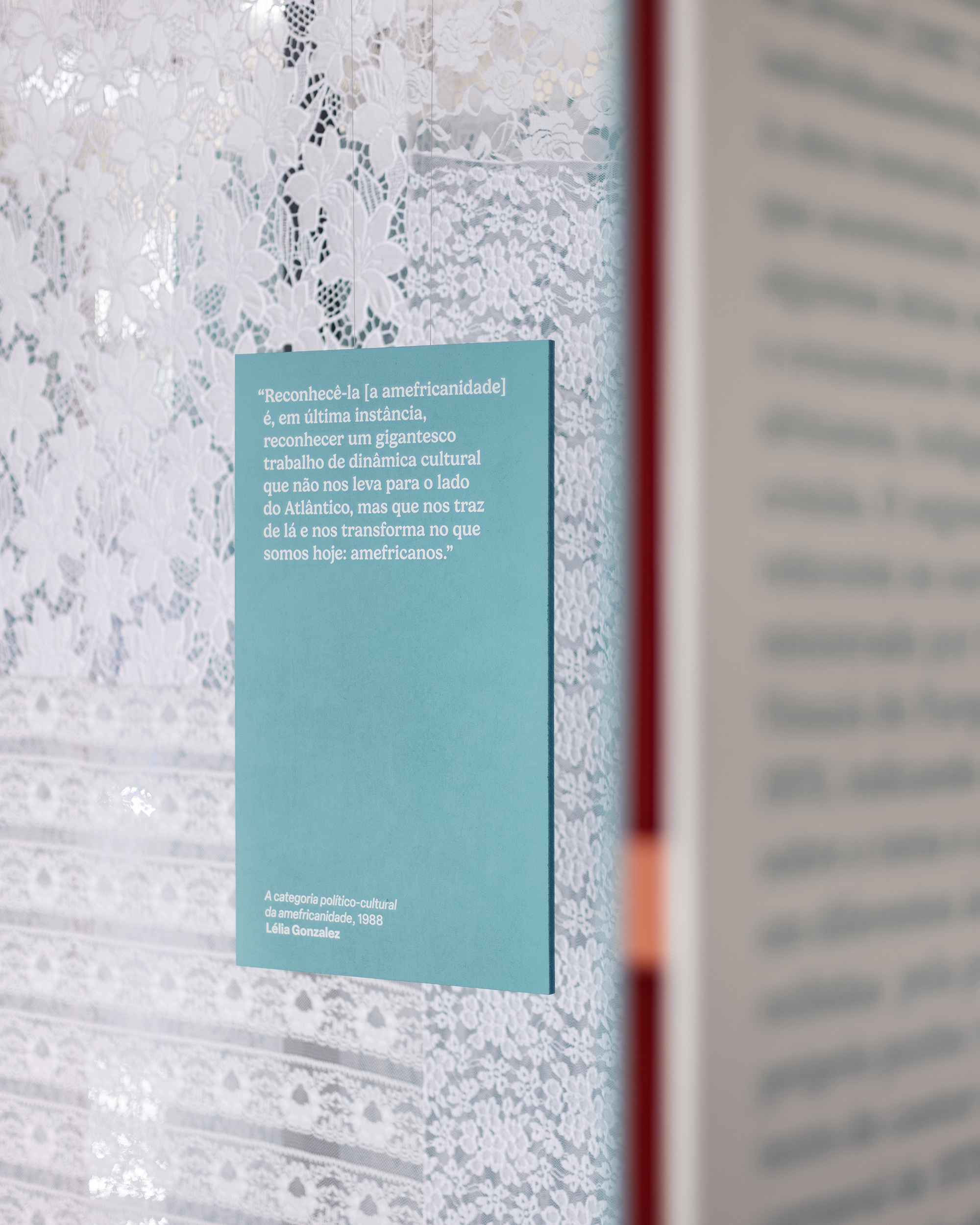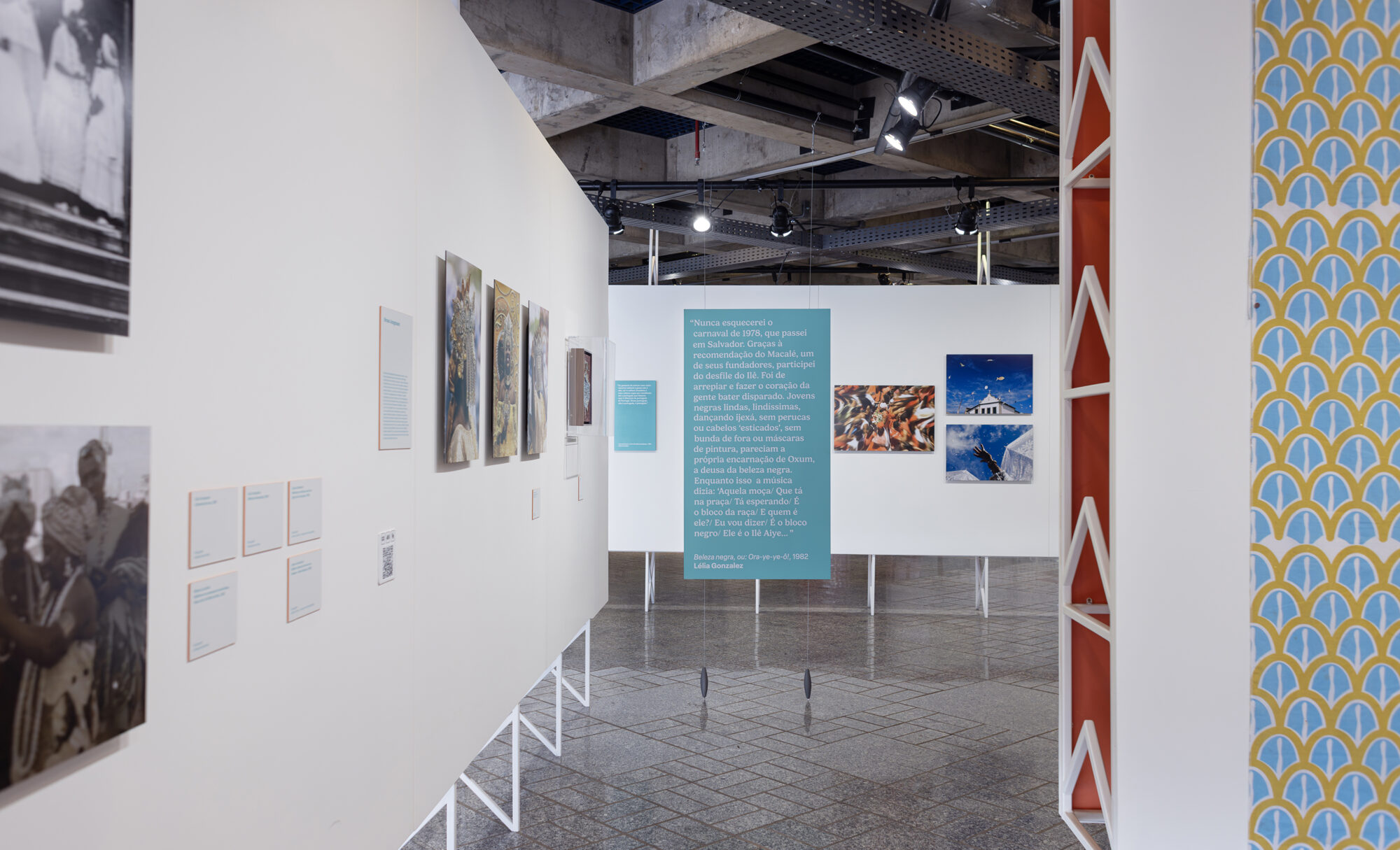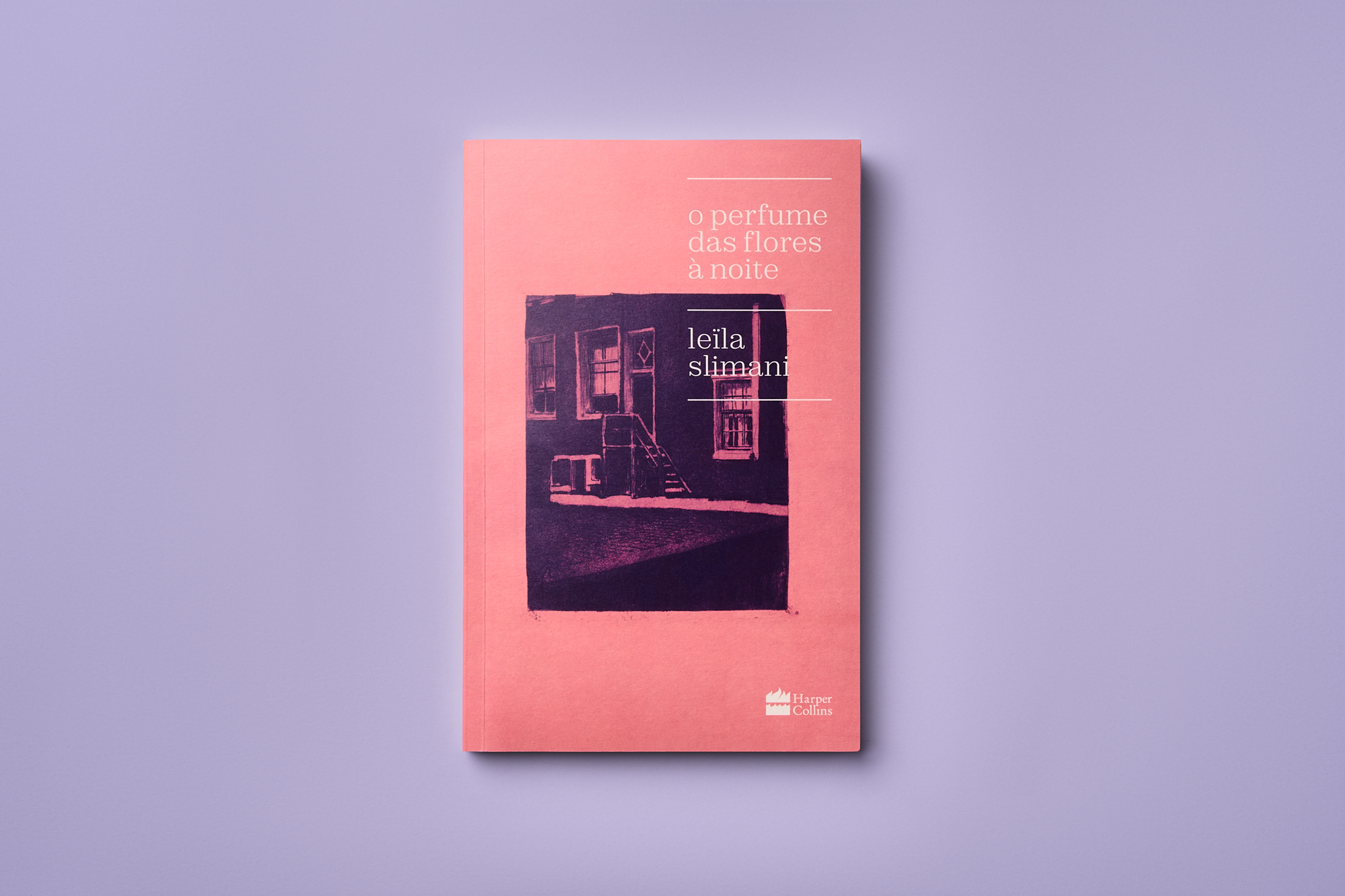With a focus on Afro-Brazilian festivals, curators Glaucea Britto and Raquel Barreto selected historical and contemporary artists and works in different media, such as photography, painting, performance, installation and video.
Based on the reading of Lélia's texts and the visual manifestations and creative processes identified in different Afro-Brazilian festivals – such as observing the way in which clothes and decorations are made –, our aim was to create a contemporary, joyful identity that demonstrated that the festivals are alive and deal with an interface between culture and political action.
The visual identity is inspired by popular festivals and is based on two main concepts: modularity and layers. Modularity is found both in the clothing used in the festivals, made with thousands of sequins, strips of fabric and other materials, and more broadly in the individuals who, together, demonstrate collective strength. These ideas are expressed in the exhibition's sign, in which the rectangular modules form the letters of the title. The layers present in the masks and costumes of some of the Afro-Brazilian festivities researched allude to the mystery and provocation often present in these moments when time is suspended. In the visual communication, the titles of the texts in each exhibition section are cut out, revealing the color of the back of the plates that hold them.
The colors refer to a party atmosphere, while the cream – almost white – creates a sober background that highlights the works and texts. The captions, printed and stuck onto orange polystyrene plates, reveal their vibrant color only when observed from the side as one walks through the space, referring to the details of the clothing that are revealed through movement.
The serif typography in which the texts are written references Lélia's academic production, and the overall visual identity points to a context that is alive and in constant movement.
